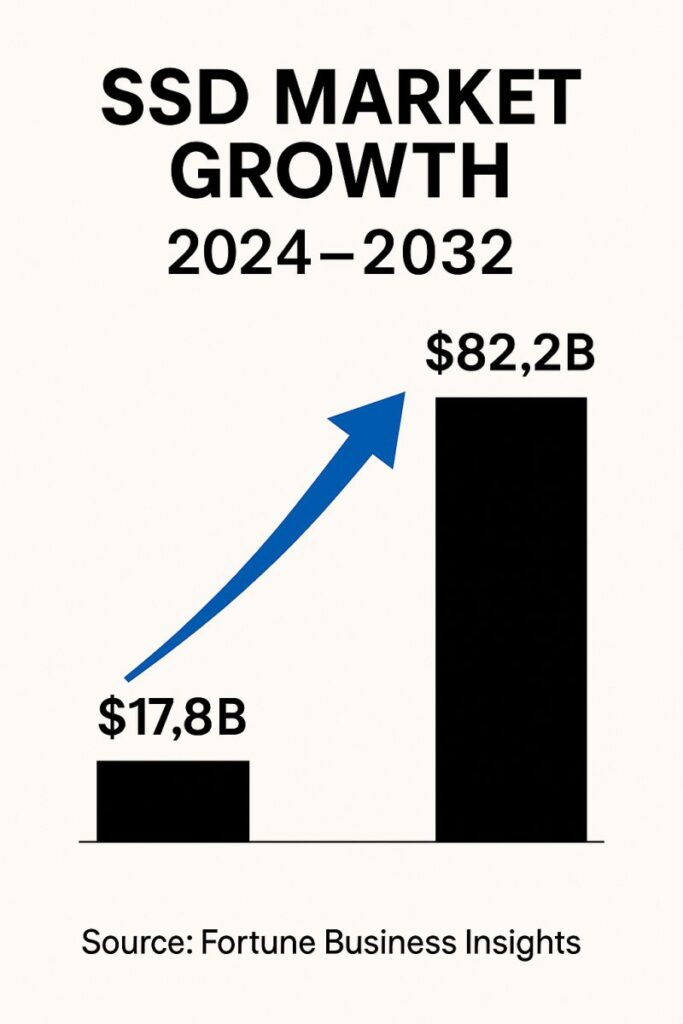The global storage market is entering a turning point as the explosive growth of AI artificial intelligence reshapes the data center landscape. According to the latest research from TrendForce, the rise of AI-driven workloads is putting unprecedented pressure on traditional nearline hard drives (HDDs), creating supply shortages that are forcing hyperscale and enterprise operators to accelerate their shift toward solid-state drives (SSDs).
For decades, nearline HDDs have been the backbone of “cold data” storage—backup archives, historical records, and files that need to be kept for the long haul but rarely accessed. Their advantage was simple: low cost per terabyte. But with AI inference workloads driving up demand for storage at every layer, the limits of HDD production capacity are becoming painfully clear. Lead times for nearline drives have already stretched beyond 52 weeks, widening the supply gap for global cloud service providers (CSPs).

SSDs Step Into the Spotlight
In today’s AI economy, performance and efficiency matter as much as cost. SSDs deliver the speed, scalability, and energy savings that next-generation workloads demand. Where HDDs struggle with throughput and latency, SSDs excel—feeding GPUs with massive datasets in real time and cutting power consumption by as much as 30%.
One of the biggest shifts ahead is the rise of QLC SSDs. Offering large capacities at far more competitive price points, QLC technology is positioning itself as the natural replacement for HDDs not only in “hot” and “warm” data tiers but increasingly in “cold” storage as well. TrendForce projects a surge in QLC adoption by 2026, marking a major inflection point for the enterprise SSD market.
A Market Poised for Price Increases
The combination of HDD supply shortages and growing SSD demand is already altering market dynamics. With hyperscale operators moving faster than expected to evaluate SSDs for cold data applications, suppliers are gaining rare pricing leverage.
Industry analysts forecast enterprise SSD contract prices will climb 5–10% by Q4 2025, with further upside possible if demand continues to outpace supply. For SSD vendors, this is not only a chance to improve profitability but also to expand their footprint in workloads that were once considered off-limits for flash storage.
What It Means for the Industry
The message is clear: AI is not just another application—it’s a full-scale disruption of storage economics. HDDs, once irreplaceable, are losing ground to SSDs at every layer of the data center stack.
For enterprises, the shift means higher upfront costs but stronger returns over time through better performance, energy efficiency, and scalability. For SSD suppliers, it means a historic opportunity to reshape the competitive landscape, drive innovation, and capture share in a market that is only beginning its growth curve.
The Bottom Line
As AI accelerates, SSDs are no longer optional—they’re essential. The coming years will see a dramatic expansion in SSD deployment, led by QLC technology and fueled by the limitations of HDD supply.
The forecast is clear: SSD demand will rise, enterprise adoption will broaden, and prices are heading upward. For data center operators and technology vendors alike, the future of storage is being written in solid-state.


